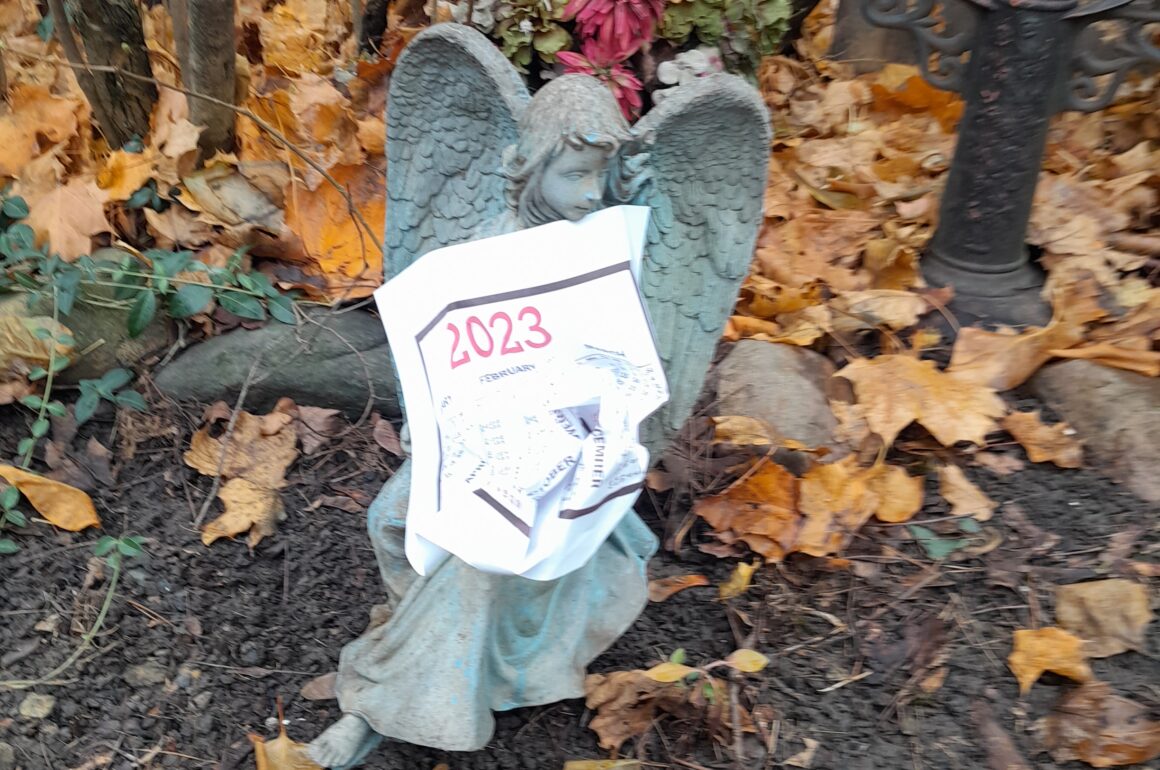
What a bountiful year it’s been for birding books! We’ve gotten them all—field guides to foreign countries; memoirs and big year books; narratives about ornithological research, then and now; identification guides on terns and flycatchers; birding guides to birdy areas of northern North America (Ontario and Minnesota); books about owls and penguins; and more. In putting together this list of Notable Books, we thought about gift-giving and the holidays and, especially about what books would be appreciated by beginning birder friends and relatives. This is a good time to spread the word that nature is good for the soul! And there are some titles here that you may want to put on your wish list. For more on best bird books of 2023, the ABA Podcast will have its annual discussion, including our own Donna Schulman, available for listening in early December.
(And, notwithstanding the byline to this post, the above paragraph was written by Donna. She, Dragan, and Mark wrote the originals of the reviews summarized below, as indicated for each one. There are plenty more book reviews, as well, on the 10000 Birds blogsite.)
FIELD GUIDES:
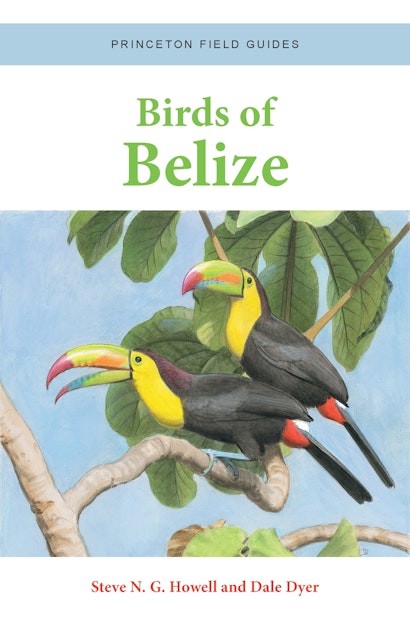
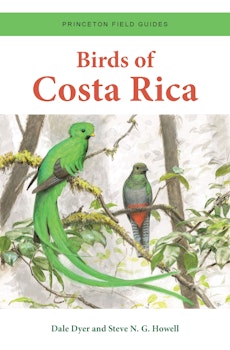 We were blessed with a Central American double-header this spring with the publication of Birds of Belize and Birds of Costa Rica, both by Steve N.G. Howell and Dale Dyer. Both guides contain Howell’s expert species descriptions and Dyer’s beautiful scientific illustrations—an unbeatable combination. There is a bit of controversy about these guides—they utilize a taxonomy partially crafted by the authors that emphasizes splits and new names for some familiar birds. In this age of ever-changing taxonomy and renaming, in a few years these changes may be the norm. (Donna)
We were blessed with a Central American double-header this spring with the publication of Birds of Belize and Birds of Costa Rica, both by Steve N.G. Howell and Dale Dyer. Both guides contain Howell’s expert species descriptions and Dyer’s beautiful scientific illustrations—an unbeatable combination. There is a bit of controversy about these guides—they utilize a taxonomy partially crafted by the authors that emphasizes splits and new names for some familiar birds. In this age of ever-changing taxonomy and renaming, in a few years these changes may be the norm. (Donna)
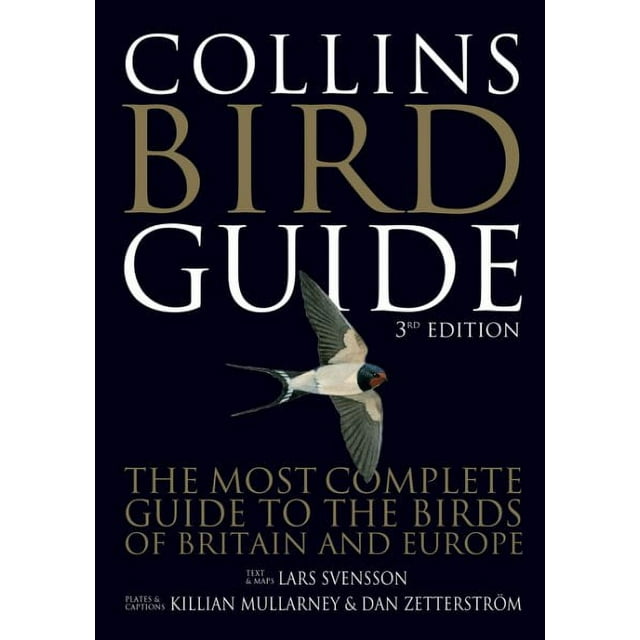
The Collins Bird Guide: The Most Complete Guide to the Birds of Britain and Europe covers Europe, North Atlantic islands, much of North Africa and the Middle East. The 1st edition from 1999 and the 2nd edition from 2009 were translated into 23 languages and sold more than one million copies.
The Collins Bird Guide is most certainly one of the very best field guides anywhere in the world and gets my highest recommendation. Almost every European birder has at least one copy of The Collins Bird Guide (I had four, but passed the #1 to a budding birder). With #1, you just needed to level up to #2, but with #2, do you need to level up again? In this case, it may be less of a need to upgrade, as much of a wish to get that bright and vibrant new edition. And it being a rather moderate 30 pounds sterling question, after the hardcover for my bookshelf, I will certainly get a softcover for my car. (Dragan)

PERSONAL JOURNIES:

Better Living Through Birding: Notes from a Black Man in the Natural World by Christian Cooper and Birding Under the Influence: Cycling Across America in Search of Birds and Recovery by Dorian Anderson are compelling though very different memoirs. Cooper writes about growing up black and gay in Long Island and later making a life and career in Manhattan, and how birding became a way for mediating a difficult world. Birding enabled Chris to create community and understand difference, so when he was confronted with a woman who tried to weaponize race against him, he was able to respond with intelligence and use the incident as a platform for education about race, gay people, and birds. Birding Under the Influence is a Big Year book full of adventure and humor. It is also the story of the author’s history with and recovery from substance abuse and how bicycling and birding across the U.S. helped him find a new direction for his life and value the community created by a love of nature. Both are honest accounts of inner journeys entwined with birding that may motivate you (or your giftee) to meditate on the possibilities of the new year while enjoying the literary ride. (Donna)

The (Big) Year that Flew By: Twelve Months, Six Continents, and the Ultimate Birding Record – which is the book’s full title, or Arjan Dwarshuis’s Big Year, as I prefer to call it shortly, is a highly anticipated and a long awaited travelogue of the author’s 2016 race against time across 40 countries in his attempt to break the world birding record.
It mostly consists of a random collection of readable field snippets describing encounters with more exciting birds. I wish there were more inter-connective tissue or other data in between – even after I finished reading it, the feeling that I wanted to learn of his travels in detail remained unsatisfied. I guess, it will be some time till this record gets broken. In the meantime I’d recommend this (depending on the season) as a good beach or apres-ski read. (Dragan)
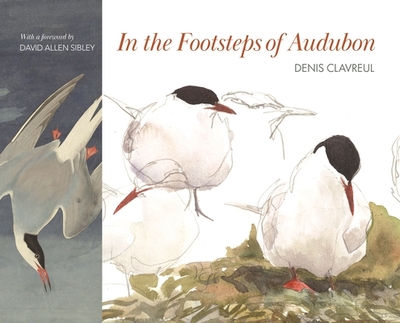
Denis Clavreul got it into his head to follow the same paths blazed, in the first part of the nineteenth century, by John James Audubon. The result is this large and handsome book, an homage, In the Footsteps of Audubon, with exquisite watercolors and evocative writing. Audubon is an outsized figure in American ornithology, but not universally admired: some ornithologists regard him as a great artist, and some artists regard him as a great ornithologist. Clavreul’s revisitation of Audubon’s various trips in North America is not a day-by-day recreation, but “a selective meditation on Audubon and history,” as David Allen Sibley says in his admiring introduction. Some of the prose, translated from the French, is quirky, but amusingly so — and, in any event, the main attraction of the book is Clavreul’s artistry in watercolor. (Mark)
HABITATS, ETC.:
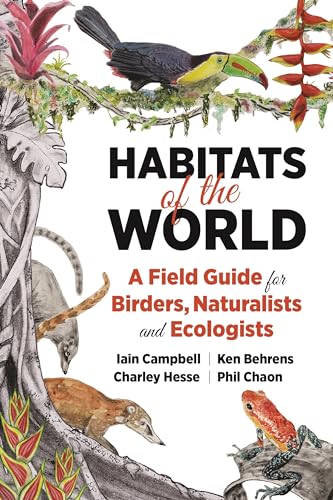
Habitats of the World: A Field Guide for Birders, Naturalists and Ecologists, by Campbell et al., is the first field guide to the world’s major land habitats—189 in all. It leaves me nothing short of impressed. It covers everything a birder wants to know about the world (that is poorly covered in school). The textual descriptions are a real gem. Where in school textbooks can you find a habitat description like this: “The stilt-root systems of the trees of this forest limit visibility from a canoe, but from a boardwalk, visibility at head height is quite good, except near dense palm groves?” To tell you the truth, I do not know how I made it without this guide for such a long time. Absolutely highest recommendation. (Dragan)
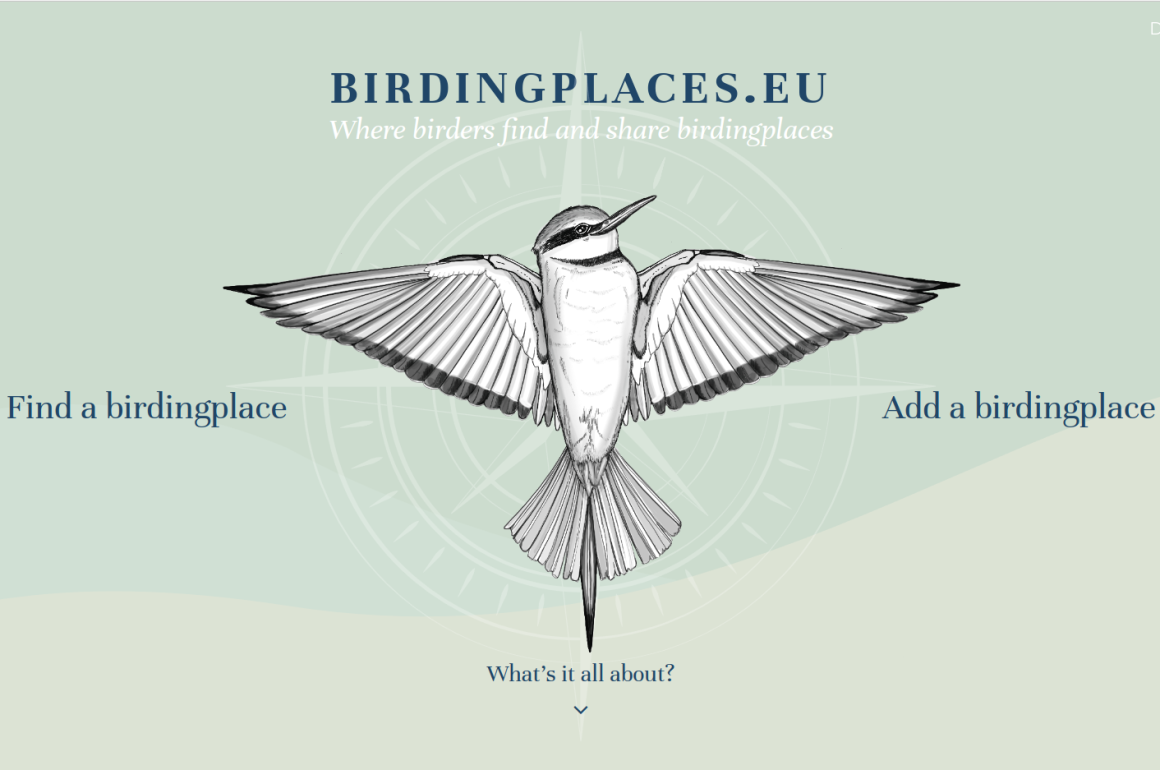
Before starting Birdingplaces.eu, Chris van der Heijden worked for BirdLife in The Netherlands. During his birding travels through Europe, he came up with the idea for Birdingplaces: why was it so hard to get good birding info in most countries? On Birdingplaces you can find thousands of areas for birding Europe and the Mediterranean. (Dragan)
BIRDY STOCKING STUFFERS:

 Or, as we call them in my house, fourth night of Hannukah gifts. Backyard Birds East and Backyard Birds West, both by “Seymore Gulls” (Eric Carlson) with photos by Brian E. Small, are the perfect gifts for beginning birders and children who you want to entice into birding. Pocket-sized (well, for deep pockets), each book has full-sized photographs of roughly 99 common birds with large-print labels indicating major plumage identification features, important behavioral clues, and transcriptions of common calls. You have to love a book that describes Lark Sparrow as “WOW! stunning dream sparrow” and says of Cactus Wren, “loves a good cactus.” (Donna)
Or, as we call them in my house, fourth night of Hannukah gifts. Backyard Birds East and Backyard Birds West, both by “Seymore Gulls” (Eric Carlson) with photos by Brian E. Small, are the perfect gifts for beginning birders and children who you want to entice into birding. Pocket-sized (well, for deep pockets), each book has full-sized photographs of roughly 99 common birds with large-print labels indicating major plumage identification features, important behavioral clues, and transcriptions of common calls. You have to love a book that describes Lark Sparrow as “WOW! stunning dream sparrow” and says of Cactus Wren, “loves a good cactus.” (Donna)
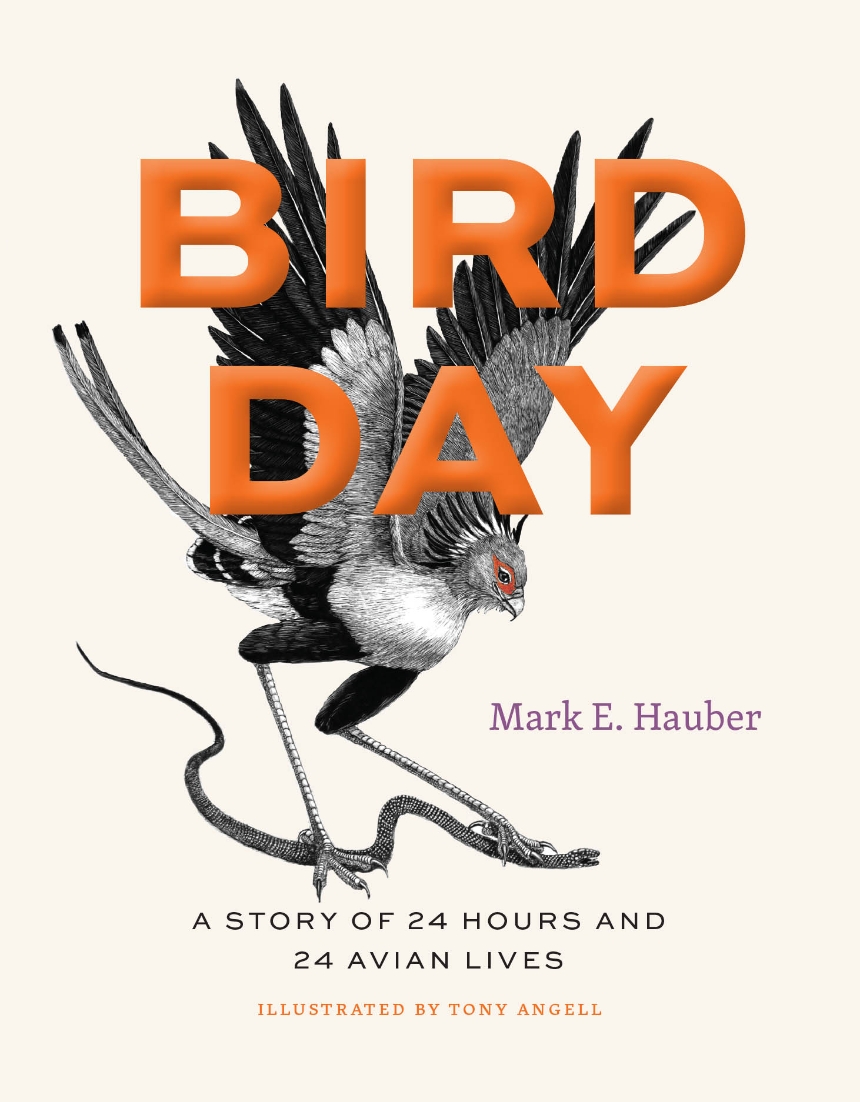
Bird Day is a little gem of a book, offering insights into the lives of 24 avian species around the world. For each hour we learn about one bird species, their behavior at that specific time and where and how they engage in it, in lively prose by Mark Hauber, an ornithologist who has a gift for explaining biological phenomena in simple words. Each species is illustrated by one of my favorite bird artists, Tony Angell, in his signature pen-and-ink drawings which combine scientific accuracy with elegance of line and shading. Part of the University of Chicago’s new Earth Day series, this book will charm curmudgeons, intrigue beginning birders, and just generally lighten up your day. (Donna)
UNIQUE IDENTIFICATION GUIDES:
 Field Guide to North American Flycatchers: Empidonax and Pewees by Cin-Ty Lee and Andrew Birch and Terns of North America: A Photographic Guide by Cameron Cox are much
Field Guide to North American Flycatchers: Empidonax and Pewees by Cin-Ty Lee and Andrew Birch and Terns of North America: A Photographic Guide by Cameron Cox are much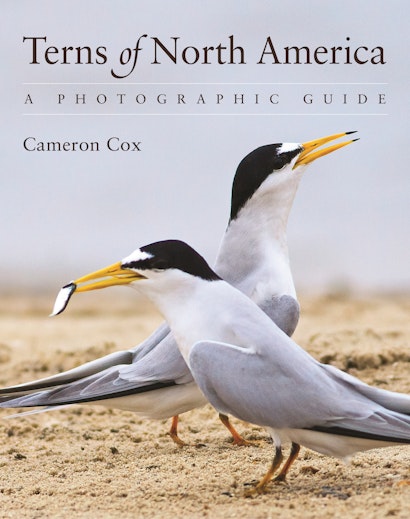 needed guides to bird groups that are notably difficult to identify. Field Guide to North American Flycatchers is the first in a projected series of three books. Its focus on only 19 species allows for luxuriously large illustrations and range maps. The text gives hope to the possibility of identifying that Empidonax flycatcher you may see in the field that won’t vocalize—it can be done with careful observation of the right features! Terns of North America offers the joy of over 300 photographs to terns, those graceful, small white birds that are sometimes ignored in favor of gulls, plus detailed material on how to identify them in their various molts and plumages. It’s the first identification guide on North American terns to be published in 20 years, and I’m so happy it’s here. (Donna)
needed guides to bird groups that are notably difficult to identify. Field Guide to North American Flycatchers is the first in a projected series of three books. Its focus on only 19 species allows for luxuriously large illustrations and range maps. The text gives hope to the possibility of identifying that Empidonax flycatcher you may see in the field that won’t vocalize—it can be done with careful observation of the right features! Terns of North America offers the joy of over 300 photographs to terns, those graceful, small white birds that are sometimes ignored in favor of gulls, plus detailed material on how to identify them in their various molts and plumages. It’s the first identification guide on North American terns to be published in 20 years, and I’m so happy it’s here. (Donna)
AND, FINALLY, FOR THAT COFFEE TABLE OF YOURS . . . .

As the technology has advanced, there are plenty of books with beautiful and accomplished bird photography (several of them have been reviewed on this site in the last year or two alone). But you won’t find another one quite like Birds: Poetry in the Sky, by Christain Spencer. Handsomely printed and bound, sized large (10 5/6 x 13 3/8 in.), with 120 breathtaking photographs, it’s absolutely brilliant. Spencer is an Australian native, and lived in Brazil for many years; the book features images of the birds of both places. (Mark)
M.C. & H.H.!












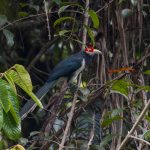
I note that Dragan plans to get a soft-cover edition of the Collins Bird Guide for his car. An alternative for him would be to get the digital version for his phone. It has now been updated to the 3rd edition and is much recommended. It also includes song and calls. A bonus is the fact that it costs less than the printed version.
Thanks, will do that. Digital first, soft-cover second.